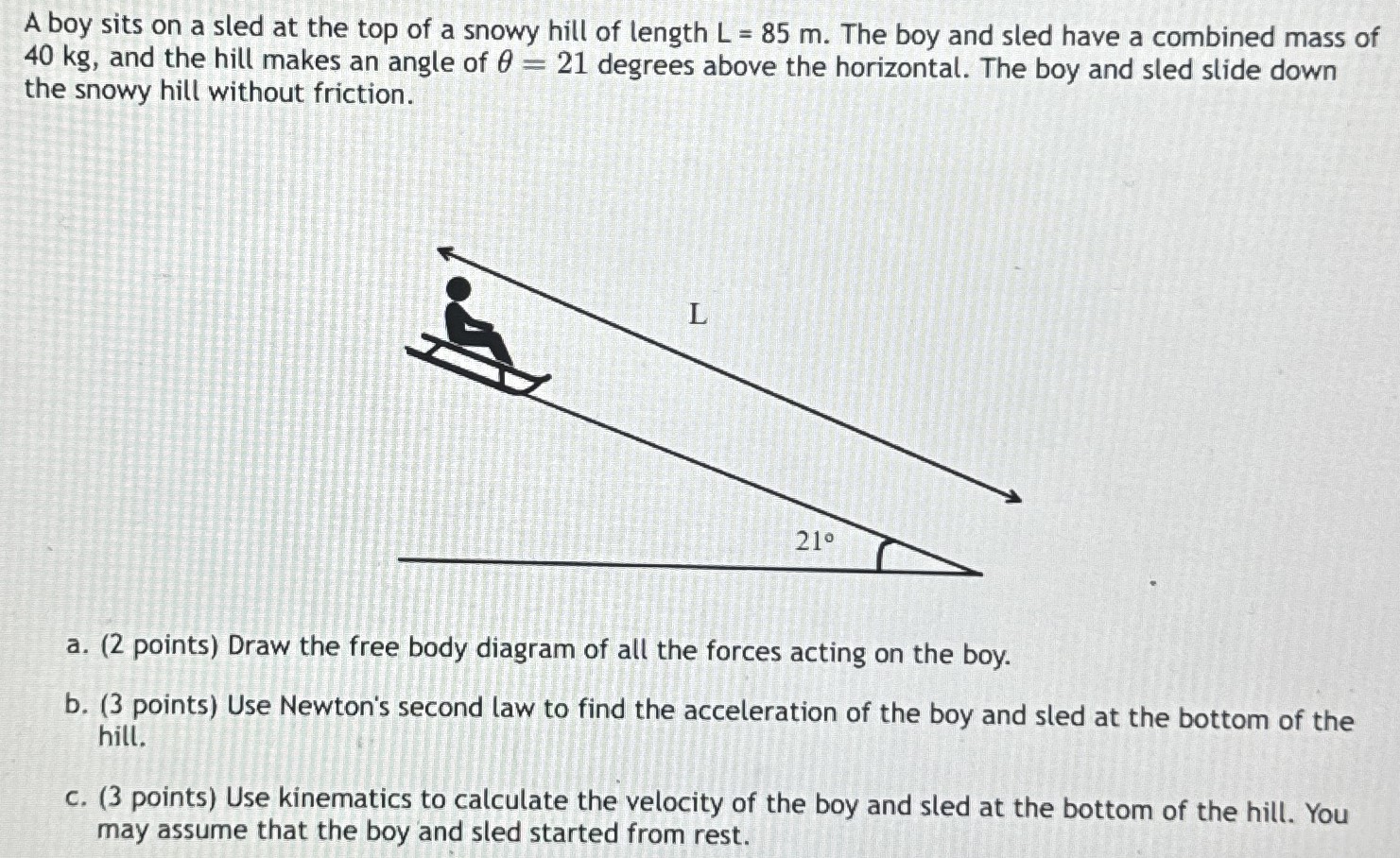A boy sits on a sled at the top of a snowy hill of length L = 85 m. The boy and sled have a combined mass of 40 kg, and the hill makes an angle of θ = 21 degrees above the horizontal. The boy and sled slide down the snowy hill without friction. a. (2 points) Draw the free body diagram of all the forces acting on the boy. b. (3 points) Use Newton's second law to find the acceleration of the boy and sled at the bottom of the hill. c. (3 points) Use kinematics to calculate the velocity of the boy and sled at the bottom of the hill. You may assume that the boy and sled started from rest.
